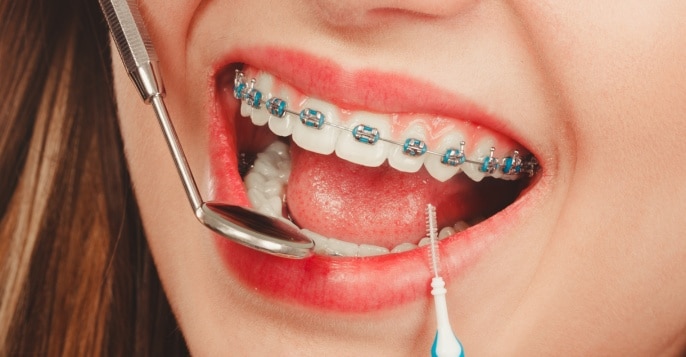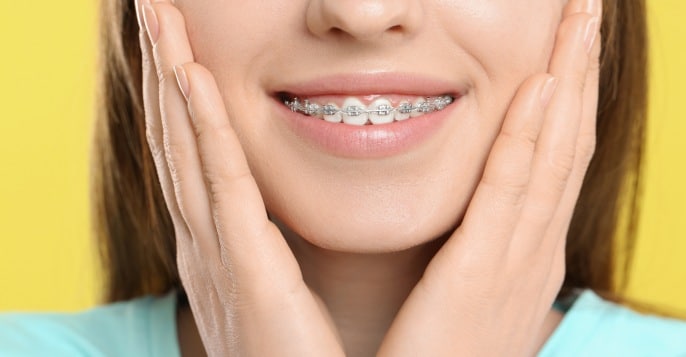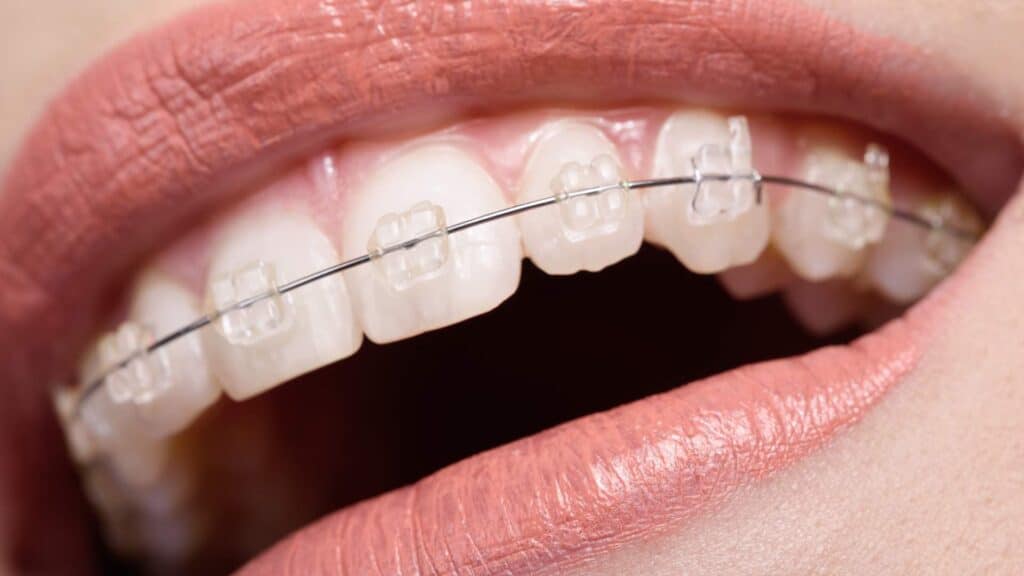Who wouldn’t want a pleasing smile? But is yours as ideal as you think it to be? More than esthetics, types of braces for teeth can correct bite issues and bequeath overall oral health. Think you might need them? Don’t guess! Consult our orthodontist for an expert opinion.
How do different types of braces for teeth work?
Braces work by continuously applying gentle pressure, and slowly moving the teeth to their correct position. How much force or how long the process of orthodontics takes is a balancing act, working with the body’s natural process of bone remodeling.
The mechanics and pace of tooth movement vary significantly based on the types of braces for teeth, so an orthodontist consultation should be taken to find the best types of braces for your teeth.
What are the types of braces for teeth available in today’s date?
Orthodontics has variations of treatments that would correct dental anomalies. The best type of braces for teeth would be chosen based on a complex interaction of factors, which involves the type and severity of the dental problem and personal preference.
Metal Braces
Traditional metal braces are a conventional and proven treatment modality. Stainless steel material is used to make bands, brackets, and wires that gradually reposition teeth. The brackets are bonded to the teeth, and the archwire, guided by the brackets, exerts gentle pressure, which creates the movement of the teeth. Ligatures, and small elastic bands, tie the archwire into place.

While metal braces are very visible, with tooth-colored or even space-clear ligatures, individuals have the option to make their braces as discreet as possible or even find a way to personalize them with color.
Ceramic Braces
It gives a more discrete alternative where ceramic braces work just like the metal variant but with tooth-colored brackets, wires, and ligatures. This cosmetic benefit comes at the expense of brittleness which makes them far more susceptible to breakages than their metal counterparts. Although this types of braces for teeth is widely used.
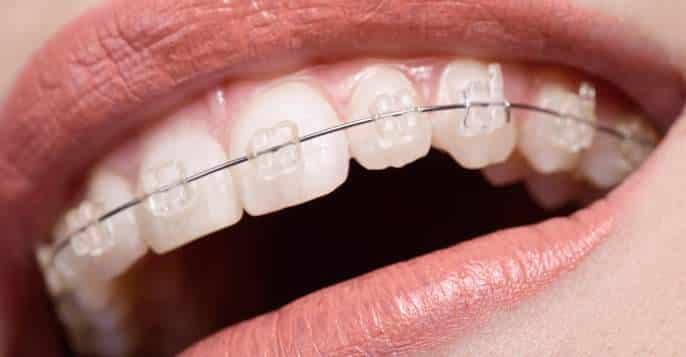
Lingual Braces
For those seeking an orthodontic solution that is truly invisible, lingual braces offer a different way. Instead of being attached on the outside, they are attached to the inside surfaces of teeth and effectively make a types of braces for teeth that are almost invisible.
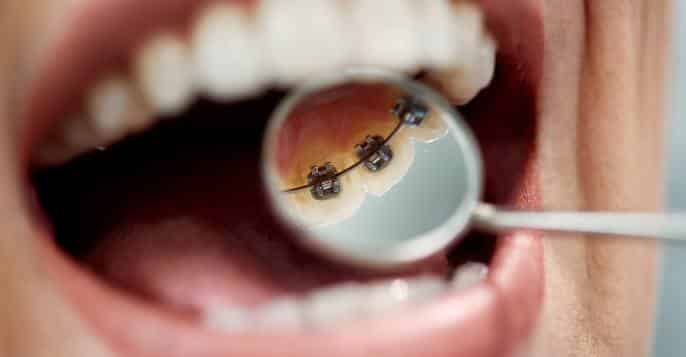
Self-Ligating Braces
Taking the basic design of the metal braces as a starting point, self-ligating braces replace elastic ligatures with some device that holds the archwire in place, integrated within the appliance itself. Many times, this offers treatment times that are much less long, with increased comfort.
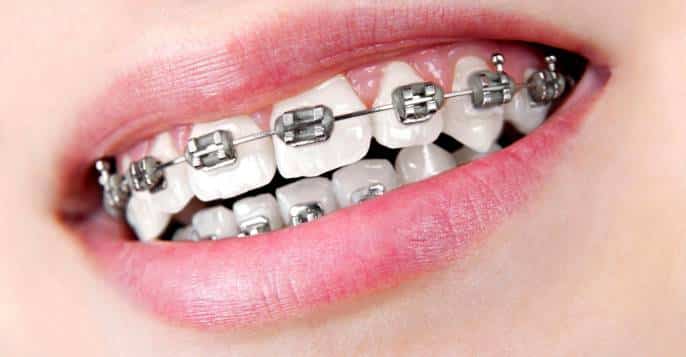
Clear Aligners
This is a removable orthodontic alternative with a series of interchanging custom-molded trays that progress teeth into specified positions. Leading brands like Invisalign and Clear Correct have made this type of invisible braces for teeth option very popular. While this offers much-needed convenience and invisibility, wearing it consistently remains the key to successful treatment.
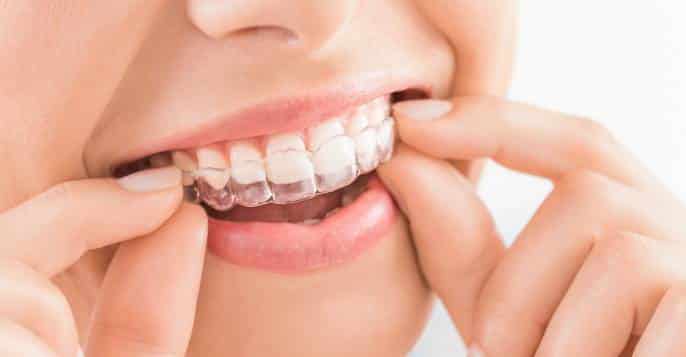
What is the Optimal Age for Braces and does it depend on the types of braces for teeth used?
While orthodontic treatment can start in people of any age, the ideal age when the best results of braces are seen is usually from 9 to 14 years. During this age of development, facial bones are relatively soft or pliable; therefore, it is easier to move teeth into their correct position.
However, adult orthodontics is also very plausible and effective. It might just be a little longer. It also depends on the type of braces for teeth used.
How long until braces start working?
The time taken to complete orthodontic treatment is an individual experience. Sure, the average duration of treatment is about two years. However, this is much more complicated. The degree of teeth misalignment is a critical determinant in the length of treatment.
For those having only relatively mild orthodontic issues, it can be less than a year. On the other hand, cases of severe bite problems or complicated tooth movement may prolong treatment to three years or more.
Other factors, such as the age of the patient, the type of braces for teeth used, or how strictly one adheres to the orthodontic instructions, can modify this timeline. Only a qualified orthodontist who has taken a detailed look at your teeth can estimate how long the treatment will be considering the type of braces for teeth used.
Which type of Braces Are the Best?
The “best” braces are entirely dependent on what you may need or want. There is no single answer that fits all.
How much do different types of braces for teeth cost?
The braces vary in cost due to various factors, including:
- Type of Braces for teeth: Different brace types call for different materials and techniques to be used. Thus the price changes accordingly.
- The severity of the Case: Simple misalignments need less treatment time compared to some complicated orthodontic problems.
- Geographical Area: This differs from place to place and, more particularly, dental practices.
- Orthodontist Expertise: Experience and reputation, when great, enhance the fees; when low, they decrease them.
- Other procedures: If extractions, surgery, or other forms of treatment are needed, then your total cost will be higher.
What difference can I expect with braces before and after?
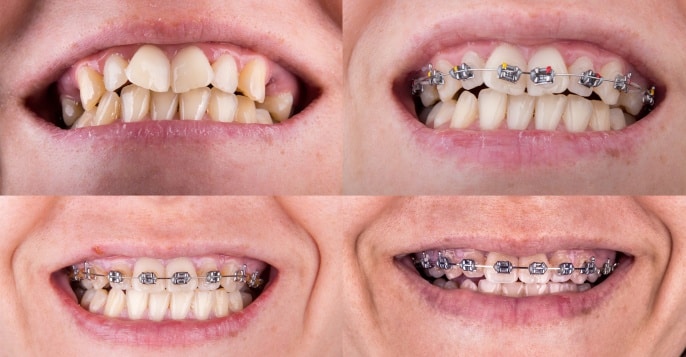
- Before Braces: Crowding or spacing, impossible cleaning, and bite problems make one hesitate to smile.
- After Braces: The aligning of teeth in a straight way will give confidence in a smile, improve oral health, be easier on the cleaning of teeth, correct any problem in biting, and enhance aesthetic facial appearance.
Still confused? Don’t worry here is a simplified guide to different types of braces for teeth:
Types of Braces for Teeth: Their Pros, Cons, and Who They Suit
Traditional Metal Braces
Pros:
- Effective in highly complex cases,
- Durability,
- Often most affordable.
Cons:
- Visible;
- Can be quite uncomfortable;
- requires careful oral hygiene.
Suits best: Patients with severe misalignment, and those seeking cost-effectiveness.
Ceramic Braces
Pros:
- Less visible than metal;
- Quite effective in most cases.
Cons:
- More breakable than metal;
- Easy staining;
- Usually expensive compared to basic metal.
Suitable for: Patients who want a less visible option with mild to moderate misalignment.
Lingual Braces
Pros:
- Invisible,
- This type of braces for teeth are effective in highly complex cases.
Cons:
- Most expensive,
- Possibly uncomfortable,
- Cleaning difficult.
Suitable for: Adults who want invisible orthodontic treatment.
Clear Aligners (Invisalign)
Pros:
- Nearly invisible,
- Removable,
- Comfortable.
Cons:
- Might need hybrid braces and aligners for highly complex cases,
- Requires discipline.
Suitable for: Adults and teens with mild to moderate misalignment, compliant with treatment.
Self-Ligating Braces
Pros:
- Faster treatment,
- More comfortable,
- This type of braces for teeth requires less frequent adjustments.
Cons:
- More expensive than traditional metal braces,
- Might not be available everywhere.
Suitable for: Any patient aiming at achieving an orthodontic result quickly and more comfortably.
Get ready to achieve your dream smile!
You should decide on the right kind of braces for a healthier and more confident you. Knowing what various types of braces for teeth exist will help you make the right decision based on your lifestyle, budget, and dental needs.
After all, every smile is different. You should see an experienced orthodontist to discuss what treatment works best for you.
Don’t let misaligned teeth get in the way. Take that first step to a beautiful smile today.
Get a consultation done today by our specialized orthodontists and begin your journey to perfect smiles, Only at Orthosquare- A multispeciality dental chain

